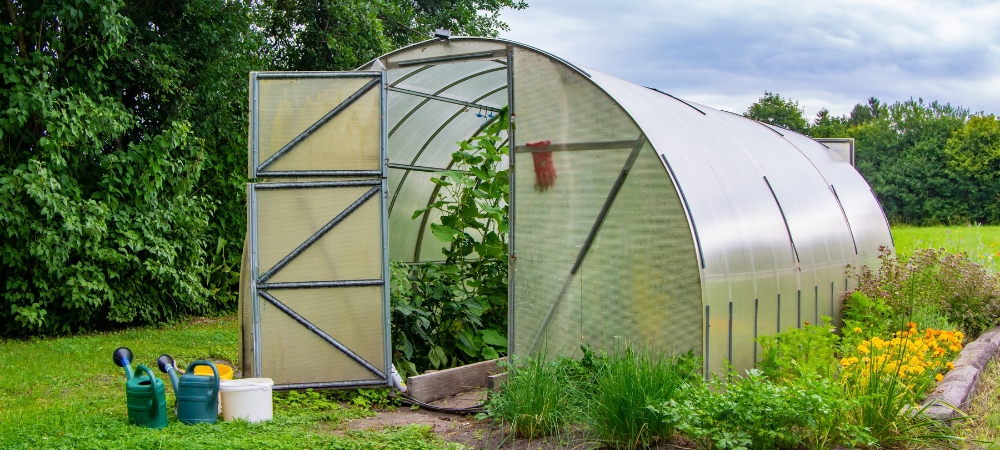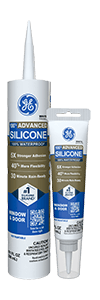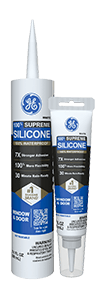Note: This DIY article is provided as a general guide only and is not intended to take the place of product-specific installation procedures; always follow applicable manufacturers’ instructions. Depending on your home’s age and condition, location within the home, and other potential factors, repairs and/or upgrades or other services may be necessary prior to the beginning and/or completion of your project that may involve the services of a home improvement professional. This article does not include advice pertaining to local building codes and/or any related inspections.
When properly sealed, greenhouses maintain stable temperatures and prevent excess moisture buildup. However, gaps around doors, windows, and panel joints can prove difficult to seal tightly, leading to heat loss and humidity issues. This guide for sealing your greenhouse outlines essential steps to create an airtight seal using durable silicone sealants for long-term protection.
Why greenhouses need proper sealing
Poorly sealed greenhouses experience temperature fluctuations, increased humidity, and higher energy costs. Gaps around doors, windows, and panel joints allow warm air to escape in cooler months and unwanted heat to enter in warmer months, making precise climate control difficult. Unregulated moisture levels can also create condensation, leading to mold growth, plant disease, and structural damage over time.
Beyond environmental control, a sealed greenhouse improves energy efficiency by reducing the need for additional heating or cooling, which can lower your energy costs. Effective sealing helps maintain a consistent growing environment and protects plants from temperature stress and humidity-related issues.
Silicone sealants provide a durable, weather-resistant barrier that prevents air and moisture leaks. By properly sealing key areas, greenhouse owners can enhance insulation, extend their greenhouses’ lifespans, and create optimal growing conditions.
Sealing a greenhouse with silicone sealant helps maintain temperature control, prevent moisture buildup, and improve energy efficiency. A high-quality silicone, like GE Advanced Silicone 2® Window & Door Sealant, remains permanently flexible, allowing it to expand and contract with temperature changes. This flexibility ensures a long-lasting, airtight seal that won’t crack or lose adhesion, even in fluctuating weather conditions.
Key areas to seal in your greenhouse
Sealing key areas in a greenhouse will allow you to maintain insulation and prevent air leaks. Doors and windows are primary points where heat escapes and drafts enter. Over time, shifting frames and weather exposure can create small gaps that impact temperature regulation. Applying silicone sealant around these openings ensures a tight seal while allowing natural expansion and contraction.
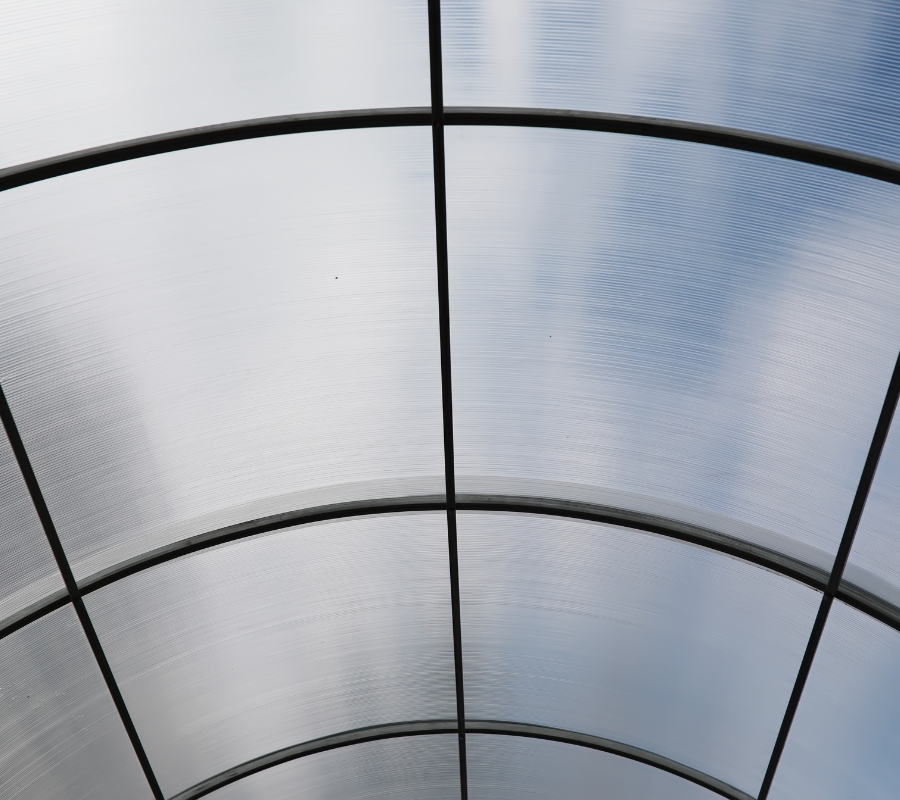
Panel joints are another critical area, especially in polycarbonate or glass greenhouses. Small gaps between panels can let in cold air and moisture, leading to condensation. A flexible, weather-resistant sealant helps bond panels securely while preventing water infiltration.
Vents and openings must also be properly sealed, while still allowing controlled airflow. Loose or poorly fitted vents can cause unwanted heat loss. Using a durable sealant around vent frames helps prevent gaps without restricting necessary ventilation. Addressing these areas guarantees you’ll have a well-insulated greenhouse, with reduced energy costs and improved plant health.
Choosing the right sealant for your greenhouse
For sealing greenhouses, silicone sealants like Advanced Silicone 2® Window & Door Sealant or Supreme Silicone Window & Door Sealant are the best options due to their:
- Flexibility
- 100% waterproofing
- Resistance to temperature changes
- Combination of high adhesion and high mobility to suit a variety of needs
Unlike acrylic or latex-based sealants, silicone remains elastic over time, preventing cracks or shrinkage that could compromise the seal.
A greenhouse sealant must withstand UV exposure, temperature fluctuations, and humidity without breaking down. High-quality silicone sealants resist deterioration from sunlight, extreme temperatures, and moisture. They also provide a strong adhesion to common greenhouse materials such as polycarbonate, glass, metal, and wood.
When choosing a sealant, look for permanently waterproof, mold-resistant, and weatherproof formulas designed for outdoor use. Clear silicone is often preferred for aesthetic purposes, blending seamlessly with greenhouse structures. Additionally, a low-odor, non-toxic formulation is recommended for use in plant environments. Proper application is just as important as selecting the right product. A good greenhouse sealant should be easy to apply, cure quickly, and remain flexible to accommodate natural material movement.
Step-by-step guide to sealing a greenhouse
Properly sealing your greenhouse will help you maintain temperature control, prevent moisture buildup, and improve energy efficiency. Follow these steps to ensure an airtight, durable seal.
- Inspect for gaps and drafts
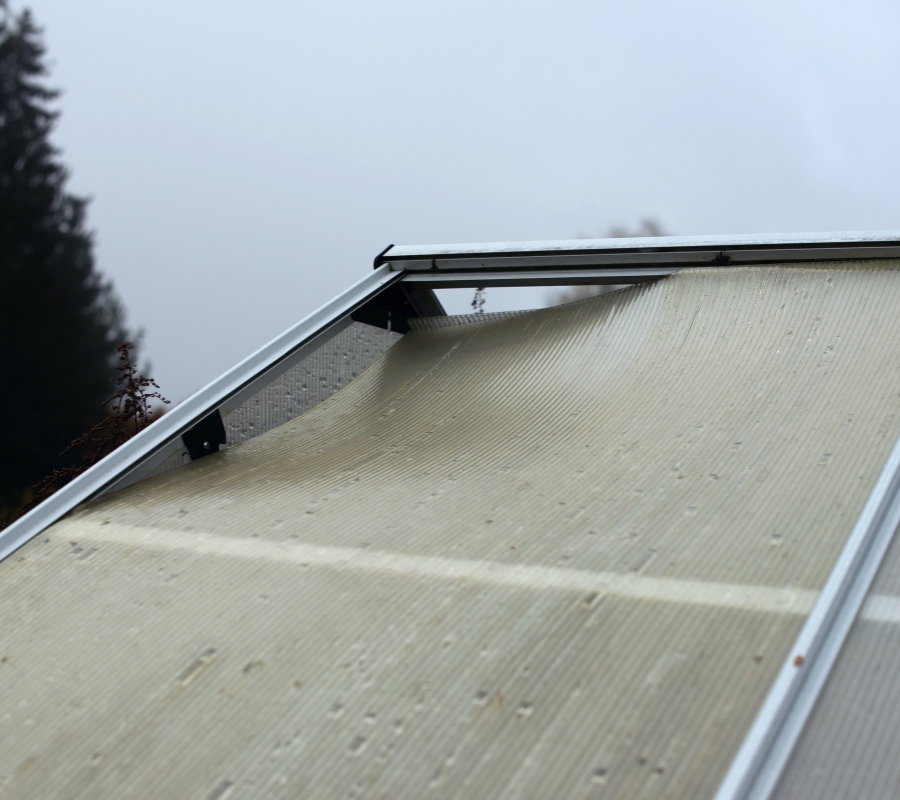
A photo of gaps and drafty spots in a greenhouse. Before applying sealant, examine the greenhouse for air leaks. Check around doors, windows, panel joints, and vents for visible gaps or areas where drafts are noticeable. Observing the movements of a small piece of paper or the smoke of an incense stick near potential leaks can help identify problem spots.
- Clean the surfaceFor a strong bond, clean all surfaces where the sealant will be applied. Use a mild detergent and water to remove dirt, dust, and old sealant residue. Allow the area to dry completely before proceeding.
- Apply the silicone sealantChoose a weatherproof, flexible silicone sealant like Advanced Silicone 2® Window & Door Sealant for greenhouse sealing. Cut the nozzle at a 45-degree angle for controlled application, then use a caulking gun to apply an even bead of sealant along gaps in doors, windows, panel joints, and vent frames.
- Smooth and secure the sealUsing a gloved finger or a caulk smoothing tool, press the sealant into place for full adhesion. Ensure complete coverage, especially around polycarbonate panels and aluminum framing, to create a strong, waterproof barrier.
- Allow proper curing timeSealants should cure fully within 24 hours; however, ensure you vary your wait time based on the humidity. They are also rain-ready within 30 minutes, making them ideal for outdoor use. Avoid disturbing the sealant during this period to ensure a long-lasting bond.
- Check for Air Leaks Post-SealingAfter curing, test for leaks by checking for air drafts or condensation buildup. If necessary, apply an additional layer of sealant in problem areas.
Maintenance and long-term sealing tips
Regular maintenance will help you ensure your sealed greenhouse stays airtight and energy efficient. Inspect seals every six months, especially before seasonal temperature changes. Look for cracks, peeling, or shrinkage in the silicone sealant, as exposure to weather and UV rays can cause deterioration over time.
To maintain a strong seal, clean sealed areas periodically with mild detergent and water to remove dirt, algae, or mold buildup. Avoid using harsh chemicals that may weaken the sealant. If signs of wear appear, remove the damaged sealant using a utility knife or sealant remover, clean the area thoroughly, and reapply a fresh bead of GE Advanced Silicone 2® Window & Door Sealant for continued protection.
Additionally, check for structural shifts in greenhouse panels, doors, and vents. Minor adjustments may be needed to maintain a tight fit. By following these steps, greenhouse owners can extend the life of their sealant and maintain optimal insulation and plant protection year-round.
To get GE Sealants products for your home improvement project, visit these retailers in the U.S. and Canada.

